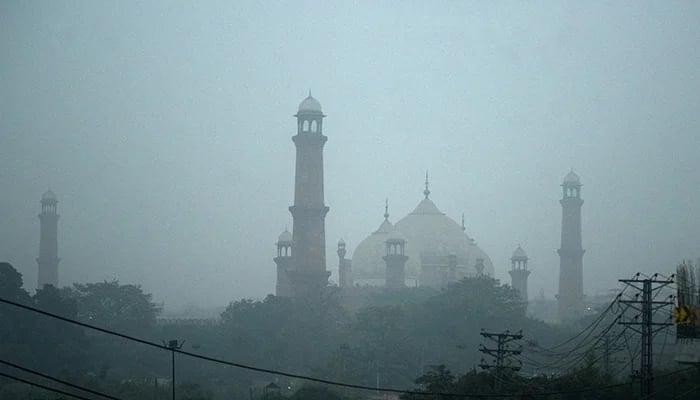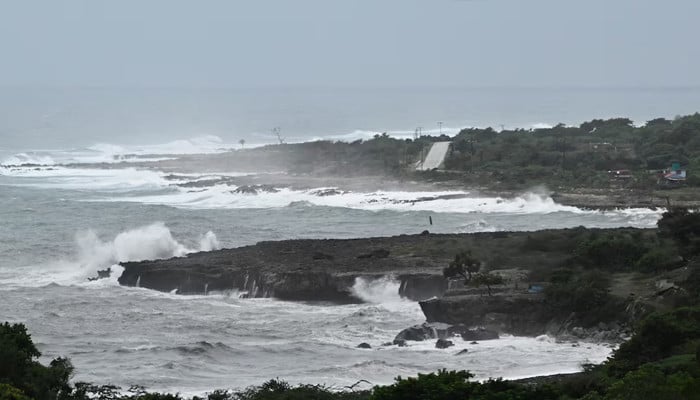
A view of the Mughal-era Badshahi Mosque amid smog and air pollution in Lahore, Pakistan November 13, 2024. — Reuters
#Lahore #records #worst #air #quality #world #smog #grips #region
Lahore topped the global pollution charts with an Air Quality Index (AQI) of over 300, according to Swiss air quality monitor Aqeer, as dark smog engulfed the provincial capital on Wednesday morning.
Around 10:30 am, Lahore recorded an AQI of 563, placing it in the “harmful” category – far above the level considered safe to breathe. The city’s main pollutant, PM2.5, is 357 µg/m³, which is 71.4 times higher than the World Health Organization (WHO) annual guideline value.
Elsewhere in the region, New Delhi recorded an AQI of 247, and Beijing reached 215, both of which fell under the “very unhealthy” category. Karachi registered 154, placing it in the “unhealthy” range, indicating that high levels of pollution are affecting several major cities in South Asia and East Asia.
Despite Lahore’s already hazardous air, Faisalabad reported an even more extreme AQI of 1037, with PM2.5 at 595.2 µg/m³ – 119 times the WHO guideline. These figures underscore the scale of the ongoing air quality crisis in the region.
These figures made the city the most polluted in the country.
Meanwhile, Multan and Khyber Pakhtunkhwa’s capital Peshawar recorded AQIs of 292 and 290 respectively, above the “very unhealthy” level.
The Punjab government has implemented an ’emergency plan’ to tackle pollution, which includes cracking down on farm fires and smog-emitting vehicles, and using anti-smog guns in polluted areas.
Punjab’s first advanced Smog Monitoring and Control Centre, equipped with modern technology, continues to collect real-time air quality data.
Anti-smog guns are being deployed at identified hotspots across Lahore in an effort to reduce partial pollution, but experts say meaningful improvements will require long-term regional cooperation and stricter emissions controls.
Officials in Punjab have blamed the problem on air from India and other parts, affecting air quality in different parts of the province.
The toxic haze has shrouded much of Punjab and northern India for days, reducing visibility and triggering widespread health complaints such as throat irritation, coughing and breathing problems. Public health experts have advised residents to limit outdoor activities and wear protective masks when necessary.
Severe air quality coincides with the onset of winter, when colder temperatures, steady winds, and emissions from vehicles, factories, and crop-burning plants trap pollutants closer to the ground in the plains of Punjab. Every winter, a mixture of low-level fuel emissions from factories and vehicles, which are exacerbated by seasonal crop burning by farmers, mostly in Punjab.
Breathing in toxic air has devastating health consequences, with warnings that strokes, heart disease, lung cancer and respiratory diseases can be triggered by long-term exposure.
The Indian capital is routinely engulfed every winter by toxic smog, a deadly combination of emissions from crop burning, factories and traffic. Despite years of government initiatives, little progress has been made, and pollution is blamed for thousands of premature deaths annually.
Earlier this month, air quality deteriorated sharply after the widespread use of fireworks during the Hindu festival of Diwali. Although the ban has been imposed in previous years, enforcement has been lax due to the deep religious significance of fireworks for many devotees.
Although local authorities in Lahore have taken measures such as water spraying and partial industrial shutdowns, experts say these efforts are short-term and insufficient. Without consistent enforcement and regional coordination, an air quality crisis is expected as temperatures continue to decline.
Health experts have warned that long-term exposure to such high pollution levels can cause serious health problems, including stroke, heart disease, lung cancer, and chronic respiratory diseases.
– Additional input from Reuters and AFP



